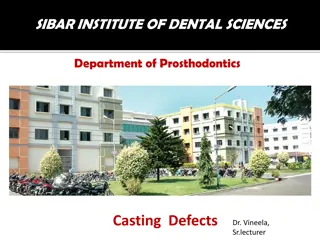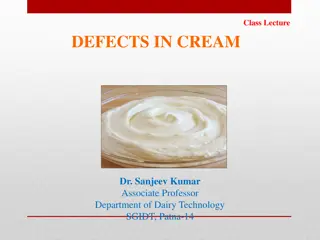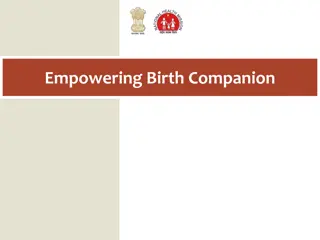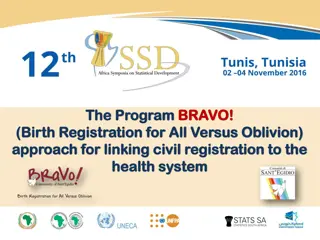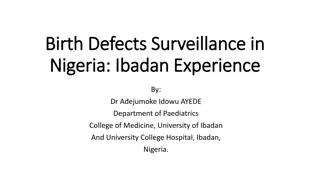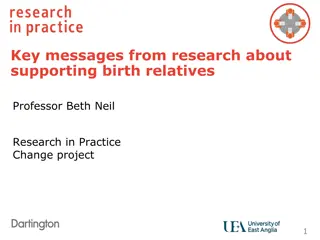Birth Defects: Causes, Prevention, and Testing
Birth defects are abnormalities that occur during fetal development and can have various causes, including heredity and environmental factors. This content explores common birth defects, such as Rh disease, spina bifida, and Down syndrome, as well as preventive measures and testing options like genetic counseling and prenatal tests. Learn about ultrasound, amniocentesis, and genetic counseling in the context of birth defect detection and management.
Download Presentation

Please find below an Image/Link to download the presentation.
The content on the website is provided AS IS for your information and personal use only. It may not be sold, licensed, or shared on other websites without obtaining consent from the author.If you encounter any issues during the download, it is possible that the publisher has removed the file from their server.
You are allowed to download the files provided on this website for personal or commercial use, subject to the condition that they are used lawfully. All files are the property of their respective owners.
The content on the website is provided AS IS for your information and personal use only. It may not be sold, licensed, or shared on other websites without obtaining consent from the author.
E N D
Presentation Transcript
Good Afternoon Monday, February 24th, 2020 Today's Schedule: o Finish Presentations o Review Birth Defects o Plickers o Testing Lesson Please put your phone in the phone holder.
Birth Defects Birth Defects are caused by: Heredity Environment
Birth Defects Rh disease Sickle cell anemia Spina bifida/hydrocephalus Tay-sachs disease Thalassemia (cooley s anemia)\ Birth Defects: Cerebral Palsy Cleft Lip/ Cleft palate Congenital heart disease Congenital rubella syndrome Cystic fibrosis Diabetes mellitus Down syndrome Hemophilia prematurity / low birth weight Muscular dystrophy PKU (phenylke) **HANDOUT
Birth Defects PLICKERS GAME
Birth Defects Prevention of Birth Defects: Make healthy choices environment Most cannot be prevent but test can be done for probability
Birth Defects Genetic Counselling: Explains options and risks - not a guarantee Usually aware of the problem Usually done by a specialist Obtain family medical histories Physical examinations Laboratory tests
Birth Defects Prenatal Tests: More than 100 birth defects can be diagnosed before a baby is born. Three procedures are used: Ultrasound Amniocentesis Chorionic Villi Sampling
Birth Defects Ultrasound: Uses sound waves to make a video image of the unborn baby Shows development Defects that involve the skeleton and organs can be detected There are no risks associated with an ultrasound
Birth Defects Amniocentesis: (AM-KNEE-OH-SEN-TEE-SIS) Process of withdrawing a sample of amniotic fluid Testing the fluid for indications of birth defects and other health problems Fluid is withdrawn using a needle An ultrasound image is used as a guide for the needle Cells of the fetus are in the fluid which helps detect birth defects
Birth Defects Amniocentesis: (AM-KNEE-OH-SEN-TEE-SIS) This test is most often used to detect down syndrome for pregnant women over the age of 35. About 1 in every 200 who has this test will have a miscarriage. It is only performed when there is a strong medical reason.
Birth Defects Chorionic villi sampling: Test for specific birth defects It samples small amounts of the tissue from the membrane that encases the fetus. A small tube is inserted through the vagina into the uterus. The samples are snipped or suctioned for analysis.
Birth Defects Chorionic villi sampling: Used to test for the same disorders amniocentesis. This testing can be done earlier in a pregnancy than amniocentesis The risk that this test will cause miscarriage or birth defects are much greater than amniocentesis It is only done after careful consideration of medial reasons and risks







